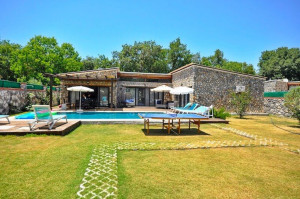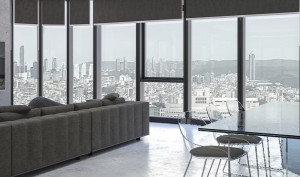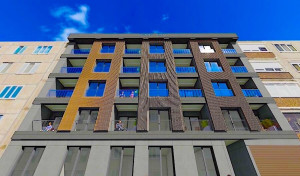There is such a rich history and culture in Turkey. For many years, the land that is Turkey today as well as most of its neighbours, including Greece, Bulgaria, parts of Russia and northern Africa were ruled by the Ottoman Empire. You can see this blend of cultural influences in houses that are built throughout Turkey, but especially around the Bodrum and Kayakoy areas, where Greek culture and architecture were dominant. We will now talk in brief of the history of Greek influences here.
Kayakoy in Fethiye (also known as the ghost town)
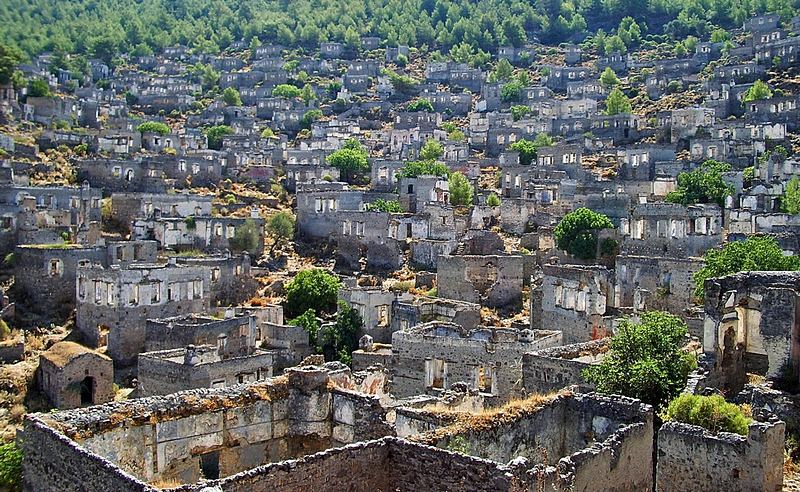 The city of Kayakoy is a ghost town that is frequented by many tourists in the Fethiye area. The city is a historical reminder of a once Greek populated village. Mother Nature has begun taking back this once spirited town settled against the backdrop of the Taurus Mountains. But, the remains is approximately 350 weathered Greek style roofless homes, the ruins of 2 Greek Orthodox churches, and the fountains and cisterns that provided water throughout the city are all still enjoyed by tourists.
The city of Kayakoy is a ghost town that is frequented by many tourists in the Fethiye area. The city is a historical reminder of a once Greek populated village. Mother Nature has begun taking back this once spirited town settled against the backdrop of the Taurus Mountains. But, the remains is approximately 350 weathered Greek style roofless homes, the ruins of 2 Greek Orthodox churches, and the fountains and cisterns that provided water throughout the city are all still enjoyed by tourists.
Although this city is worn with age and has been beaten up by more than one earthquake and a major fire, it maintains the look of being centuries old despite the fact that is it was left to ruin as late as the 1920's during a population exchange between Greece and Turkey. This makes Kayakoy a unique modern ghost town.
Kayakoy was originally built in the late 1700’s. This village lies 8km from the city of Fethiye, home to many popular resorts with yacht filled harbours and merry vacationers. Greeks and Turks inhabited this area and coexisted for many years under the Ottoman Turkish administration. The Anatolian Greek speaking Christian’s populated this town until 1923 and called it Karmylassos. The Turks living here called it Karakoy. The residents were mostly professional craftsmen or fisherman and lived a quaint modest lifestyle. During the 19th century, Kayakoy was a prosperous and lively town. The village was a thriving community of schools, churches, shops, and businesses.
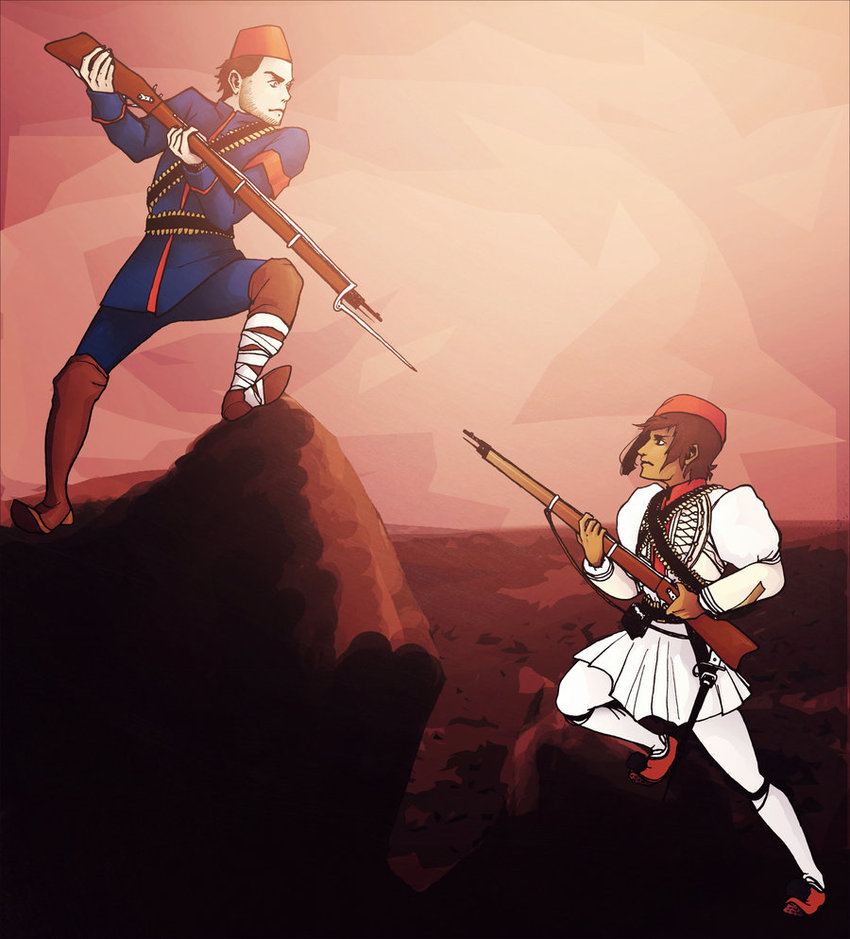 The 20th century saw about 20,000 Greek Orthodox residents. After the fallout of World War I and the disbanded Ottoman Empire, came the Greco-Turkish war, which lasted from 1919-1922. The Greeks lost this war there were also numerous outbursts of violence and retribution vigilantism. These outbursts were often aimed towards the remaining Orthodox Greeks that resided within the new Turkish borders and Turkish citizens in Greece were plagued by discrimination and hate crimes.
The 20th century saw about 20,000 Greek Orthodox residents. After the fallout of World War I and the disbanded Ottoman Empire, came the Greco-Turkish war, which lasted from 1919-1922. The Greeks lost this war there were also numerous outbursts of violence and retribution vigilantism. These outbursts were often aimed towards the remaining Orthodox Greeks that resided within the new Turkish borders and Turkish citizens in Greece were plagued by discrimination and hate crimes.
There were droves of Greek residents fleeing the violence in Turkey and seeking refuge elsewhere, so much so, that in 1923 in order to hinder any further bloodshed the governments of the two nations stepped in and declared an agreement to a mutual enforced population exchange. The people involved were not given a choice in staying or going. The governments forced the Christian Greek residents living in Turkey’s Kayakoy to leave their homes with as many personal belongings as they could carry themselves, go to the town of Fethiye in Turkey and board boats to transport them back to Greece. In Greece, they exiled thousands of Turks residing on the islands and mainland Greece. Greece struggled during the exchange in finding shelter for the over 200,000 refugees.
During the earthquake in Fethiye in 1957, many of the buildings in this village took heavy damage. It was difficult for the migrants, most did not want to leave their homes but because of their nationality they were forced to leave, they were bartered in a way. Many roamed the streets and ached to be back in their homes and back with their friends from land where they had lived for many years. They were the minority in their native land not really belonging to either side.
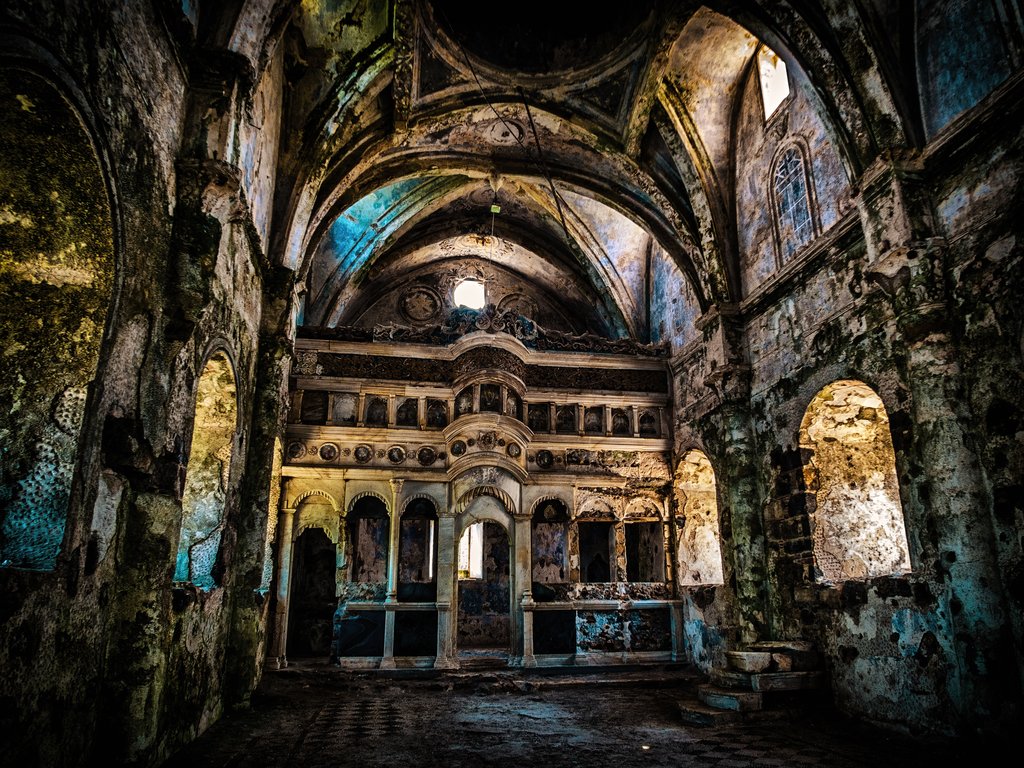 Today the village stands as a museum townand historical monument, adopted by UNESCO in the name of world friendship and peace. The village draws in tourists to the site to view the beautiful modern ruins. There have been a few homes that are restored and have been since occupied but mainly this town is deserted except for the tourists and roadside vendors selling handmade commodities and salvaged trinkets from the village. The remnants of the buildings left behind are protected by the Turkish Government.
Today the village stands as a museum townand historical monument, adopted by UNESCO in the name of world friendship and peace. The village draws in tourists to the site to view the beautiful modern ruins. There have been a few homes that are restored and have been since occupied but mainly this town is deserted except for the tourists and roadside vendors selling handmade commodities and salvaged trinkets from the village. The remnants of the buildings left behind are protected by the Turkish Government.
The Greek influence on the city’s architecture is especially notable in the two remaining churches where you will see Greek art adorning the walls and familiar Greek building features, such as arched doors and windows in most of the city’s remaining homes. The Greeks were also more typically inclined to building with stone since wood for building was scarce in the homeland.
The damage and deteriorating state of the houses are because the roofs needed constant maintenance. The locals made their roofs from, local easily found and available, brushwood and straw. The mixture was then trussed with mud and covered with crude gypsum mortar, which was used as a sealant to repel rain. When all the inhabitants were forced to leave during the exchange, no one remained to maintain the residences, so the houses began to quickly collapse.
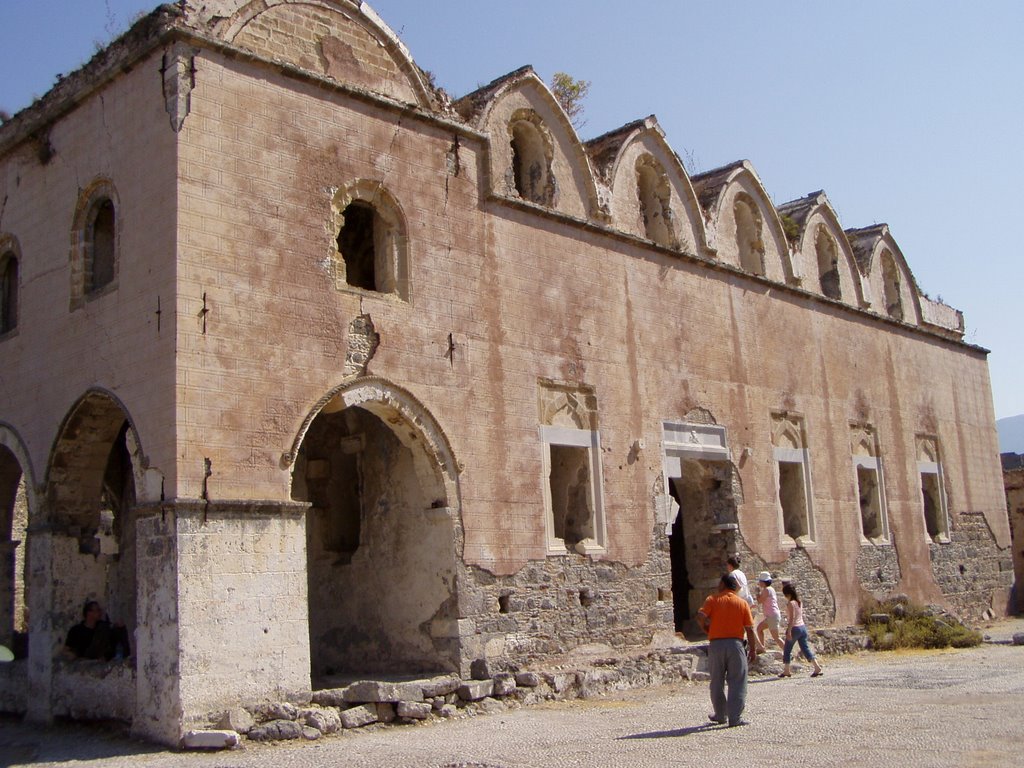 The nearby residing Turkish villagers saw the opportunity to grab up materials and began pillaging all the viable timber the houses and churches contained.
The nearby residing Turkish villagers saw the opportunity to grab up materials and began pillaging all the viable timber the houses and churches contained.
Mostly the existing undamaged doors and windows, and frames. This resulted in the ruins you see today because the stone walls could not support their own weight and began to collapse above the doors and windows.
The churches were mainly pillaged by nearby villagers who dug up the foundations and burrowed into the walls looking for hidden gold and treasures. The churches were also raided for the expensive and decorative marble. Any iron that remained was salvaged for its value was used in constructing new buildings. All the salvaging off the building caused there complete collapse when the earthquake of 1957 happened and the ruins left today are the product of the nature wearing of the stone and materials over the years.
Bodrum (Halicarnassus)
 The Aegean town of Bodrum is another city in the south-western part of Turkey that holds a prominent Greek history. Bodrum’s ancient name is Halicarnassus. Herodotus “the father of time,” was born here and lived during the 5th century. Bodrum has been occupied continuously for centuries and seen many civilisations. The first settlement that left structural
The Aegean town of Bodrum is another city in the south-western part of Turkey that holds a prominent Greek history. Bodrum’s ancient name is Halicarnassus. Herodotus “the father of time,” was born here and lived during the 5th century. Bodrum has been occupied continuously for centuries and seen many civilisations. The first settlement that left structural 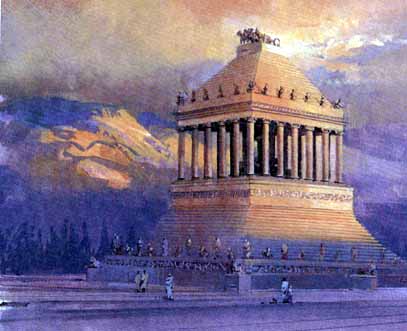 evidence is on the small rocky island where the Castle of St. Peter now stands. When the knights of St. John arrived to begin building, they found the remains of a much older castle that was built by the
evidence is on the small rocky island where the Castle of St. Peter now stands. When the knights of St. John arrived to begin building, they found the remains of a much older castle that was built by the
The construction of this city was not an easy task. The Dorian’s main problem was they were not the original settlers here and had to fend off the invading attacks from the native Carians. The Carians were actually mentioned in Homer’s Iliad he called them “barbarous of speech.” The Carians have been accredited for teaching the Greeks the use of crest on helmets and handles on shields, which had been previously used slung over the shoulder. They are also accredited for aiding in the defence of Troy.
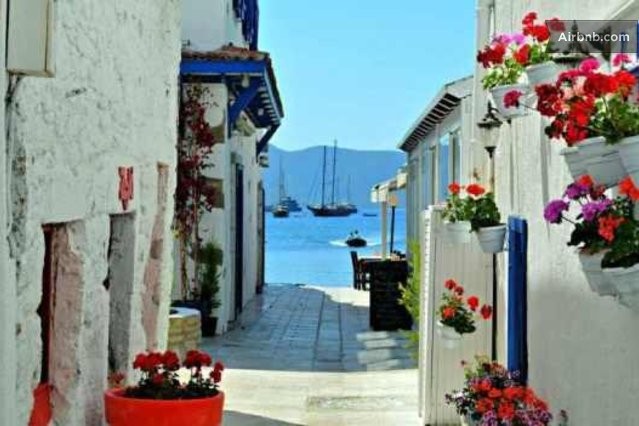 In the 6th century, the Lydian’s took over this area then the Persians reined 546 BC. The famous most famous of all Carian satrapies Mausolos took control of the region in 377 BC. He constructed many cities and moved his capital from Mila to Halicarnassus. The population of these cities grew as Mausolos allowed neighbouring citizens to join his capital. He then had new walls constructed around the city along with beautiful palaces, theatres and temples. The most monumental and grand of all these buildings, however, was the monumental tomb, his wife Artemisia built in tribute to her fallen husband. It took 5 years to be constructed and at the completion in 340 BC, it was ranked one of the seven wonders of the ancient world.
In the 6th century, the Lydian’s took over this area then the Persians reined 546 BC. The famous most famous of all Carian satrapies Mausolos took control of the region in 377 BC. He constructed many cities and moved his capital from Mila to Halicarnassus. The population of these cities grew as Mausolos allowed neighbouring citizens to join his capital. He then had new walls constructed around the city along with beautiful palaces, theatres and temples. The most monumental and grand of all these buildings, however, was the monumental tomb, his wife Artemisia built in tribute to her fallen husband. It took 5 years to be constructed and at the completion in 340 BC, it was ranked one of the seven wonders of the ancient world. Halicarnassus finally fell to the Seljuk Turks in 1071AD. The knight with permission were able to build the castle of St. Peters which is now the centre of the town and has a French, German and English tower that still stands tall today.
In Bodrum, you’ll see the familiar columns in many buildings. You’ll also note tall floor to ceiling windows with arched tops that are usually seen in Athens and other Greek cities.
Bodrum's modern architecture has also been affected by its Greek past. In keeps with its former structure, modern day Bodrum houses are generally built over 2 floors and tall buildings are not allowed. They have cubic-geometric lines with sharp features, they are generally white-washed and have flat roofs. This is a sharp contrast to the rest of Turkey, where building a pitched roof is a must.
It was a sign of the times that cities would be forced into new building styles with each war won or loss. Invaders from across the globe took their home architecture elements with them to each new land. In the cities of Bodrum and Kayakoy, you will clearly see examples of Greek influence on local architecture.
Beautiful Alacati
Alacati today displays some of the best preserved and restored Greek houses anywhere in Turkey. Thanks to the initiatives of discerning citizens as well as hard craft put in by the local Municipality, Alacati now stands proud to showcase its laid back culture and heritage. A visit to Alacati should be on any culture tourist's top to do list.





